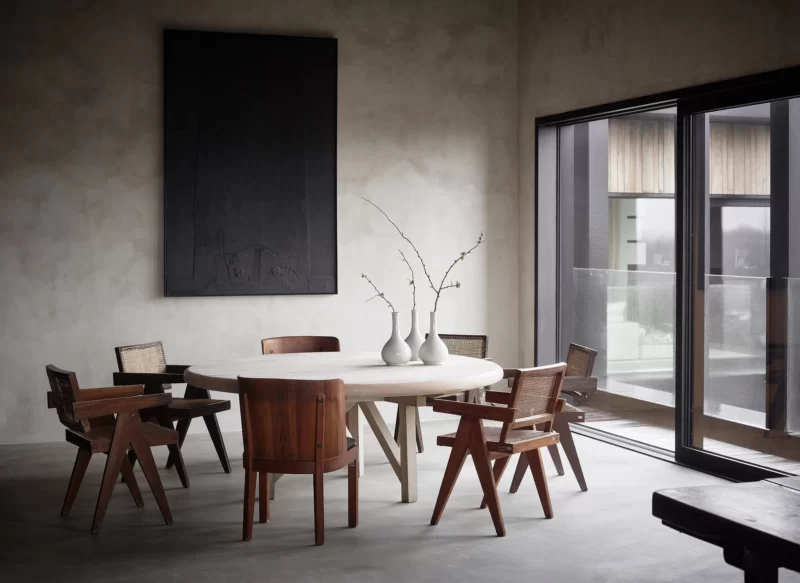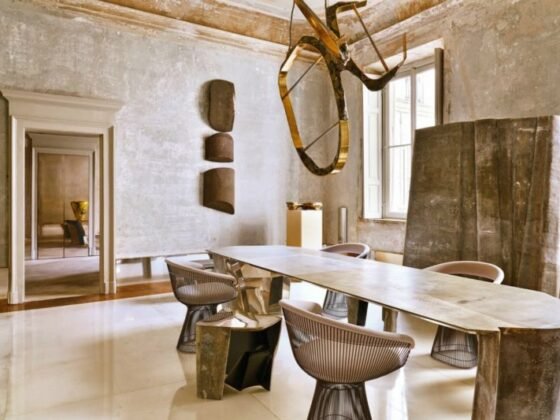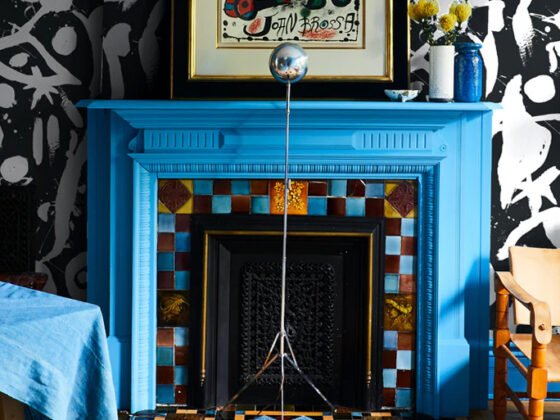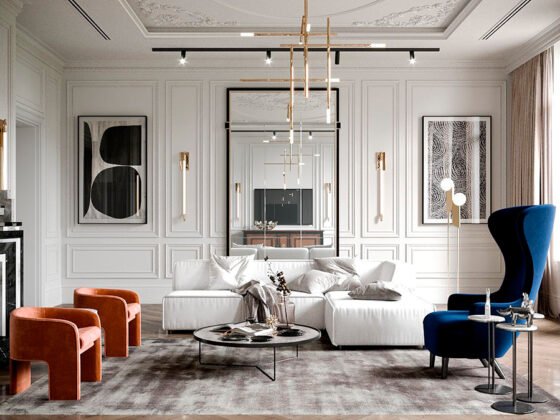Our natural environment is incredibly important to how we use our space. Culture and climate are the key factors influencing our homes. And how we design our homes mainly depends on where we live.
A thatched house is nice in the English countryside, but it wouldn’t be a great choice on Tornado Alley, the most tornado-prone area. Just like in Greenland, Spanish-style villas are not popular. Not only the climate, but also historical and cultural aspects have a great influence on the prevailing interiors of certain countries. With that in mind, we’ve “traveled” the world (virtually) to understand what interiors and furniture typically look like in the US, France, Japan, the Mediterranean and Scandinavia. Leave your passport in the drawer and make yourself a coffee 😉
American
History has determined that American interior design is closely related to English style, as the British were the first to emigrate to this area. Interiors of this style usually tend towards simplicity and versatility.
The American-style interior is characterized by the absence of doors and partitions between the hallway, living room, kitchen and dining room. Zoning can be done by lowering the floor or ceiling level. On the other hand, bedrooms, bathrooms, guest or children’s rooms are often very private and located in a separate part of the house.

To create such a design at home, you need to know some important design features:
- Visual space increase by dividing it into zones;
- The interior has relatively few details. Decorative ornaments are quite rare
- The color range of this style is varied, but mostly its natural earthy colors: from light sand to dark brown and green.
- Lighting helps to divide the room into separate zones. The central ceiling light source is installed only in the living room. The rest of the rooms use combined lighting with various lamps, wall lights and floor lamps.
- American-style stairs are an integral part of the interior. They can be recognized by their simple construction and the contrasting color of the steps and partitions between them.
- In classic American interior design, we usually see wooden floors painted in a light gray or brown color. The floor can also be covered with natural wood laminate.
- The walls are covered with colorful wallpaper in light shades or painted.
- The furniture is mainly made of red wood, it is quite massive, usually with no decorations.
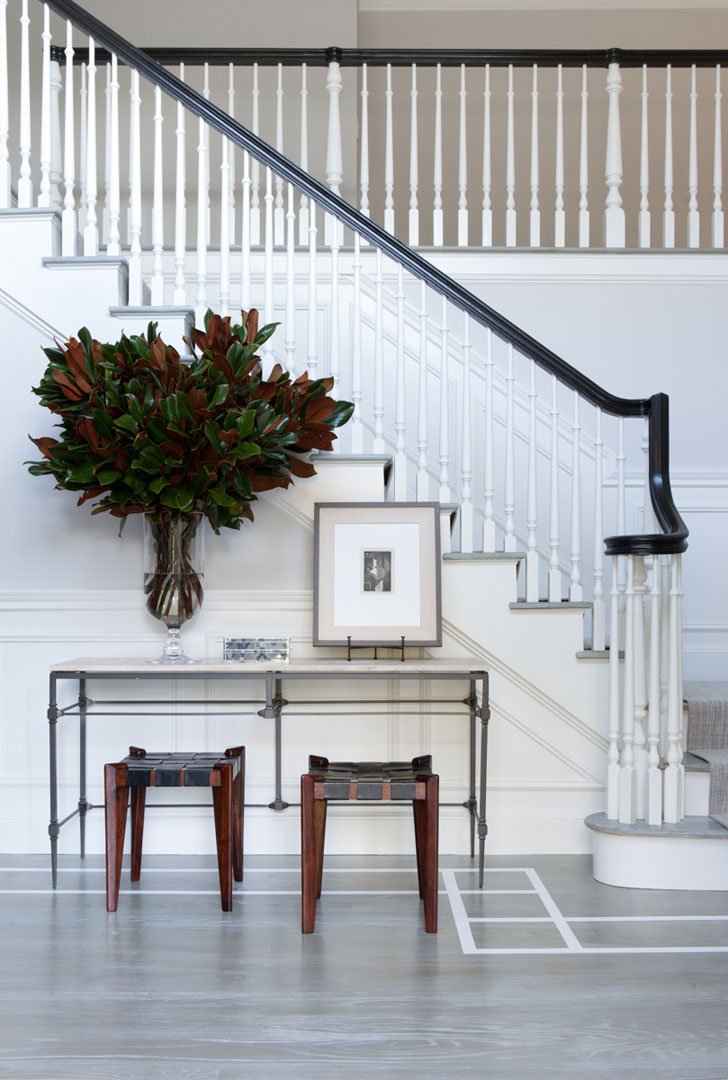
Americans focus on comfort and functionality starting from the furniture to the materials used. Instead of using special details and patterns, durability, comfort and qualityb always comes first.
French
For centuries, France has been placed on the world’s pedestal because of its artistic savoir-faire – natural taste and knowledge “about everything”. Whether it’s cuisine, fine wine or fashion, the country is known for its ability to do everything with innate style.
French interiors are like French fashion: effortless and always so chic. And all this is extremely difficult to replicate. French homes are as grand as their history, littered with European antiques, chandeliers, lavish draperies and eye-popping architecture.
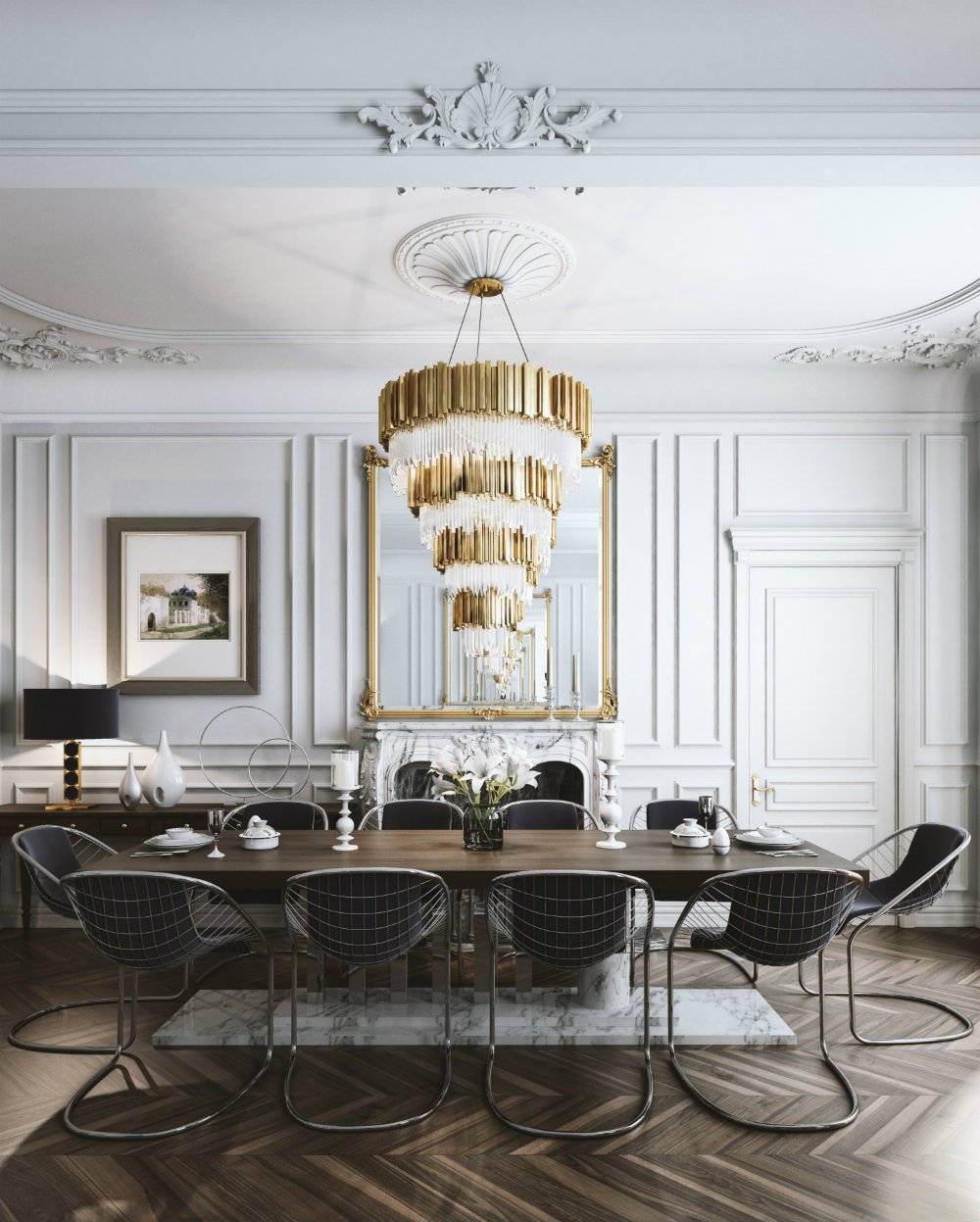
When it comes to French design, all the essential elements are natural, as if not planned. Trying too hard is a huge insecurity in French society and the same can be said for their homes. The interior should be simple with a mix of old and new – modernist furniture incorporated with old classics. Recycled items should also not be looked down upon, buying valuable and preserved items in second-hand stores is especially common there. Anything that adds character and a sense of harmony to the home, is fine.
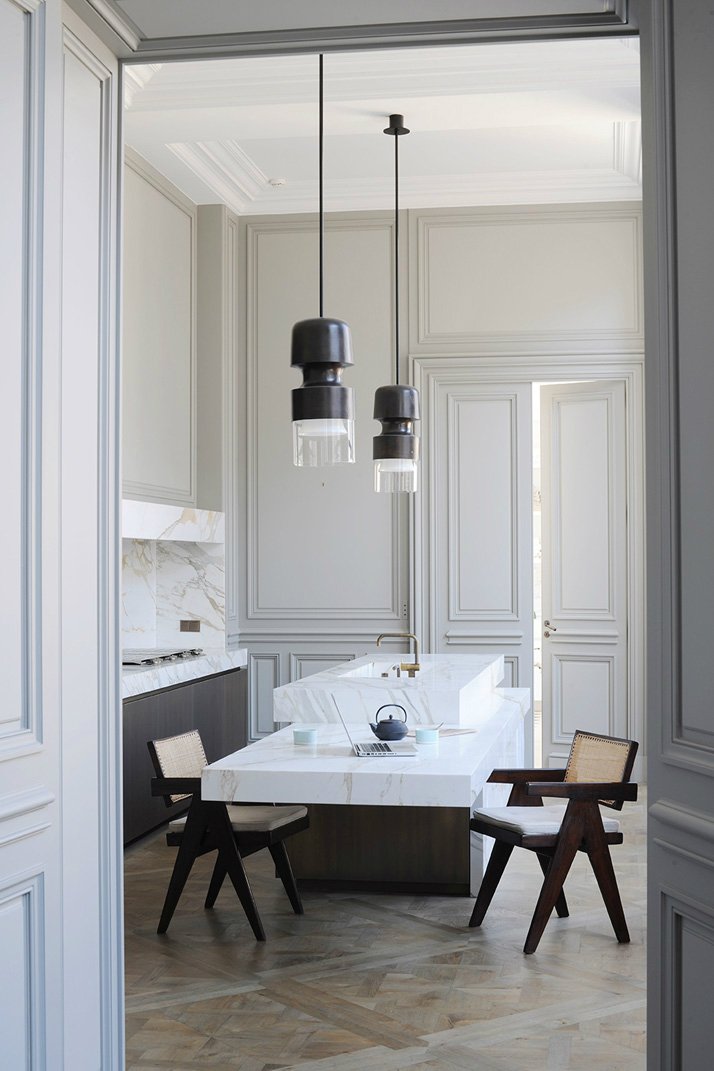
There few rules that can describe the French interior style:
- Respect the architecture. One of the most important tips from French interior designers is to respect the elements of each individual home, as this gives each home individuality, character and charm. For example, a ceiling adorned with crowns and moldings would look absolutely stunning accented with a striking chandelier.
- Don’t follow every trend. Sometimes classics is a better choice than a trendy one.
- Bright colour elements. Although neutral and extremely light colours are used most often, single elements of brights are also important here, they can give some character and unique style to the room.
- Mixing styles and materials. The idea of mixing trends with vintage pieces gives personality to every interior. In order to implement such an idea, you must make sure that the trends or styles that are combined with each other are not very clearly expressed in your interior.
- Effortless style. This is the reason why everyone is jealous of the French style. Everything seems to be done very easily, nothing is planned, but still amazing. French interior designers say that their main rule is to stick to simplicity and not try too hard, to highlight valuable things or sentimental items.
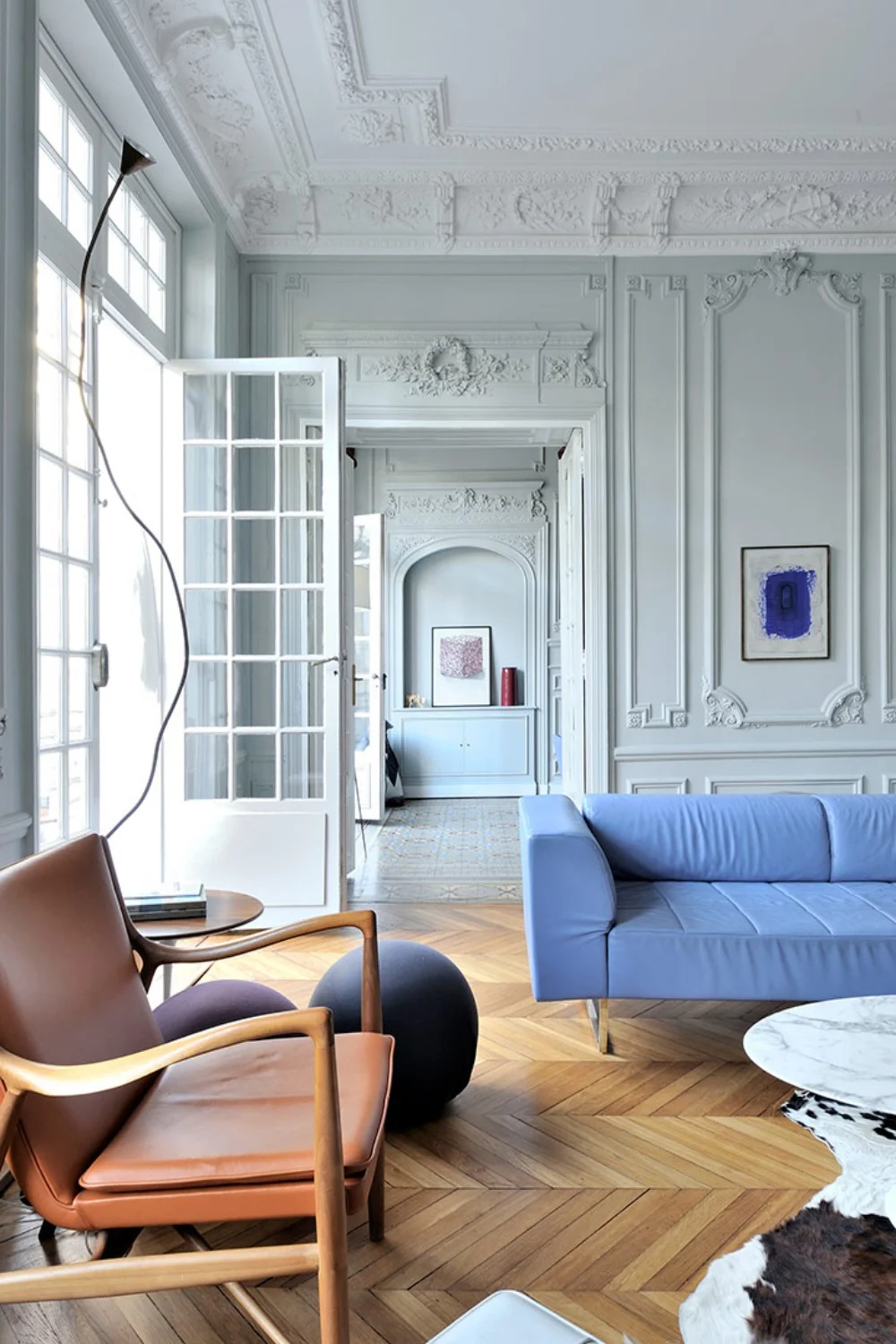
French style often uses all white color schemes, or at least a muted palette. However, bold and bright colours or interesting patterns and textures are often used in the decor to tie the room together. French style also ignores trends. Trends come and go, but the home and its basics don’t.
Japanese
Being “zen” or “in the present”, turning to yourself and developing spiritually is currently a trend in a fast-paced world. In recent years, the popularity of yoga and meditation has increased sharply, and so has the interest in Japanese culture. As a result, Japanese interior design has become very popular, and many people want to turn their homes into a calm and cozy environment.
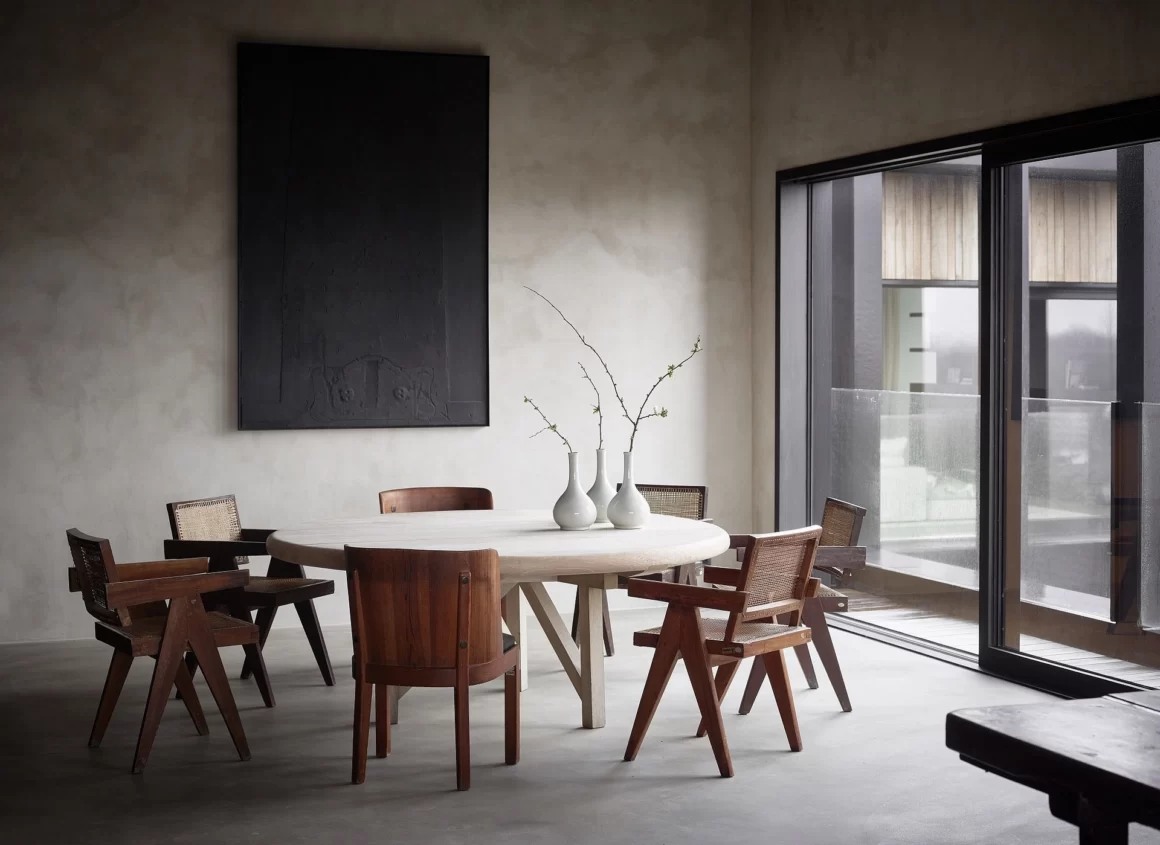
If we were to sum up Japanese interior design in one word, it would be zen. Steeped in thousands of years of tradition, this ancient style, known as Kanso, is not only soothing but also culturally representative of the Japanese way of life. Through years of experience, trial and mistakes, this traditional home aesthetic has accumulated some solid and simple principles that should guide us when it comes to Japanese home interiors:
- A multifunctional and adaptive room. One of the main reasons why people have fallen in love with Japanese interior design is the massive expansion of space. And who doesn’t like their home to look bigger and more spacious? This is because many traditional Japanese homes include open-plan living areas.
- Nature and natural light. This ancient oriental style focuses on the inspiration of nature and natural light. Shizen philosophy is a principle that recognizes harmony between humans and nature. It is reflected as the basis of many Japanese furniture design techniques, which often use bamboo and light wood. Large windows as well as sliding doors are very important to let as much natural light into the room as possible.
- Natural and sustainable fibers. All Japanese homes reflect to the nature and often incorporate sustainable materials mixed with natural fibers. Wood, bamboo and rattan are often used for various interior details. Wood gives the space texture, peace and sophistication. The floor is mostly made of wood or gray stone tiles, the walls are covered with panels covered with opaque paper.
- Plants and water. The easiest way to integrate nature into the interior is plants. Japanese people love to have traditional Japanese plants in their interior. Incorporating water elements into your home is always a good idea, when creating a zen space in your home. Even a water-themed oriental wall painting is a way to bring the element of water into the home.
- The importance of minimalism. Today modern Japanese design is recognized as one of the best examples of minimalism. The Japanese perceive simplicity as a form of luxury. Modern, minimalistic furniture with clean lines are made by extremely clever engineering and involving interesting solutions for usage.
- Neutral colour palette. Simplicity is essential when choosing a color palette. Because of the natural beauty of the outside world, Japanese homes are usually dominated by natural colours, which come from the brown shades of wooden elements, as well as the green of plants.
- Japandi – a mixture of Japanese and Scandinavian designs – is a very popular trend at the moment. Both are beautifully minimalistic, stylish and cosy, bringing from Japanese design a respect for the beauty of imperfection and a Scandinavian approach to functionality.
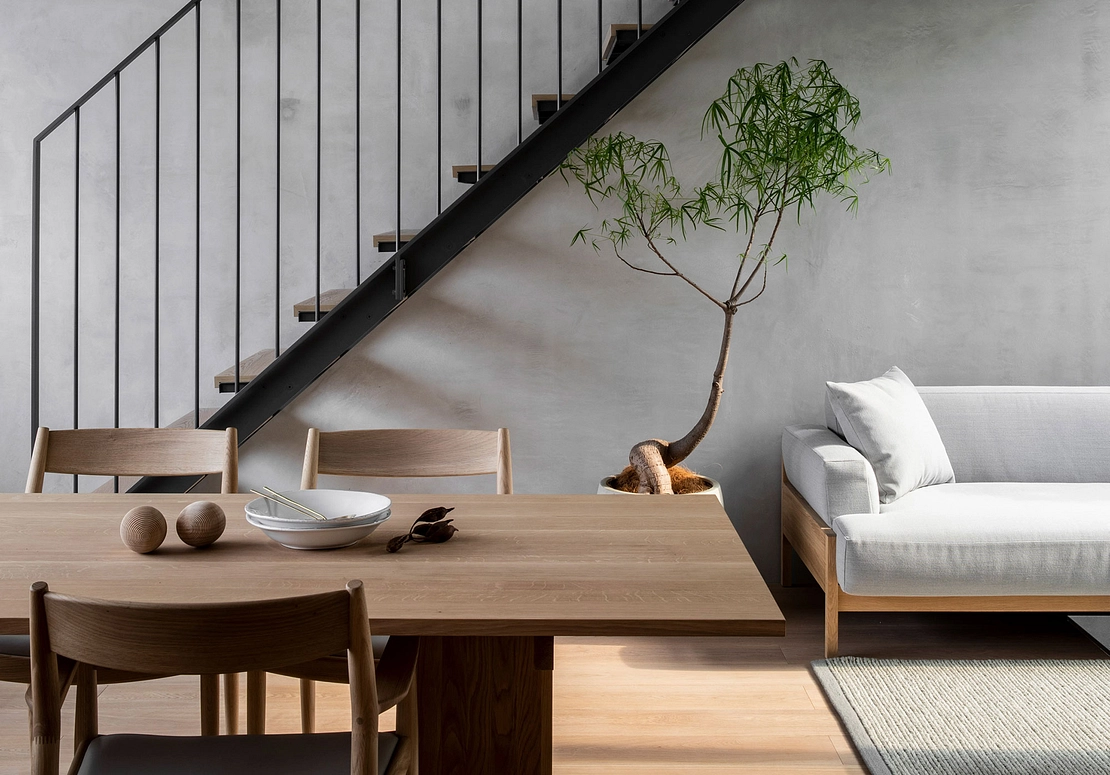
Less is more – one of the most important principles of Japanese interior design. Strict austerity, minimalism, appreciation of relics and traditions adapt technology and modernism so that they fit into already established aesthetics, and not the other way around.
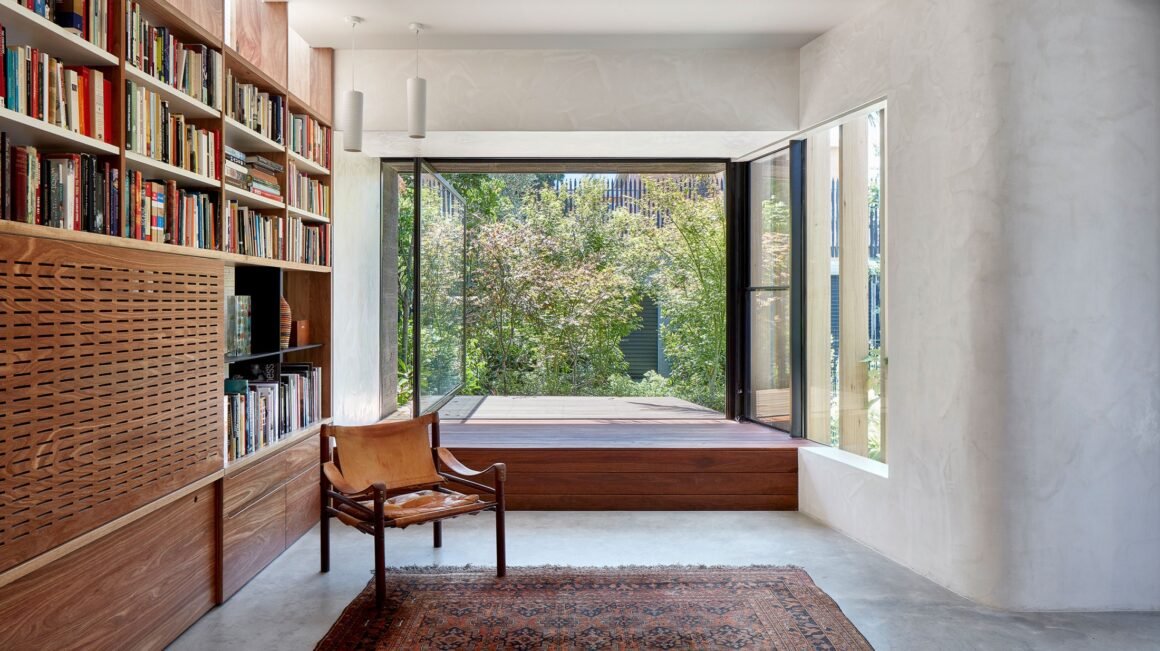
Mediterranean
The Mediterranean region is vast, involving many countries and cultures. From the French Riviera and coastal cities of Spain to the hills and vineyards of Italy and even Morocco. But when it comes to interior design, there is a common feature – the Mediterranean style smells of relaxation, romance and warmth.
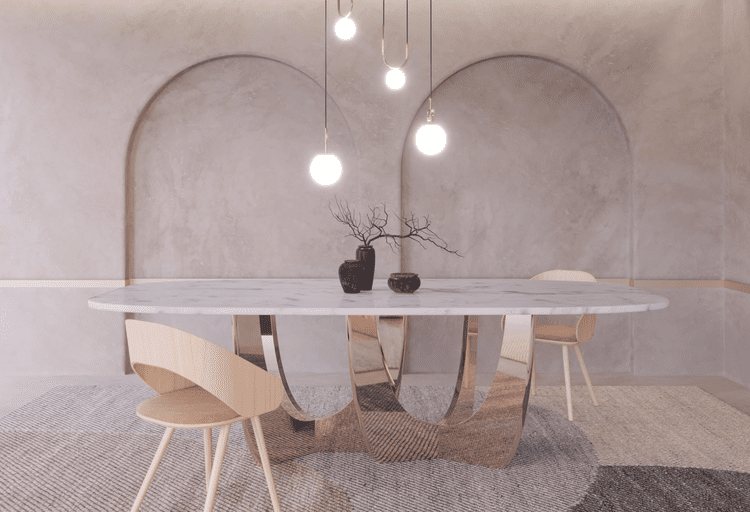
This style is timeless and can be interpreted in both – classic and more modern ways. The original features of old homes, such as natural stone walls, exposed wooden beams or tiled floors, can preserve the character, while adding modern furniture and decor will give contemporary feeling. Today’s Mediterranean architecture and interior design may focus on a modern lifestyle with larger rooms, bigger yet energy-efficient windows and modern luxuries, but common traditional materials and architectural details can be preserved to emphasize history and heritage.

The climate of this region played a significant role in the formation of its characteristic interior style. It was developed to meet the needs of warm and dry climates. Although each Mediterranean country has a very different culture, common elements of style are familiar to many of them. However, each country has acquired unique characteristics over the years. For example, bright blue colour is widely used in Greek interiors, while dark floors and rural motifs are common in Italy.
The main design elements for the Mediterranean style:
- Focus on living both indoors and outdoors
- Lots of natural light and nature views
- Arch windows, doors and internal casings
- Exposed beams, natural stone walls, mosaics, tile or hardwood floors
- Spacious, airy interior spaces
- Less is more
- Use of natural materials such as wood, rattan, tiles, ceramics, terracotta, wrought iron, linen and cotton for decoration
- A neutral palette with white stucco walls and natural finishes
- Using colours that reflect the natural environment – from the blue-green of the ocean to the yellow and golden tones of the sun
- A big space for family and hospitality, the focus is on common areas with plenty of seating and a large dining table.
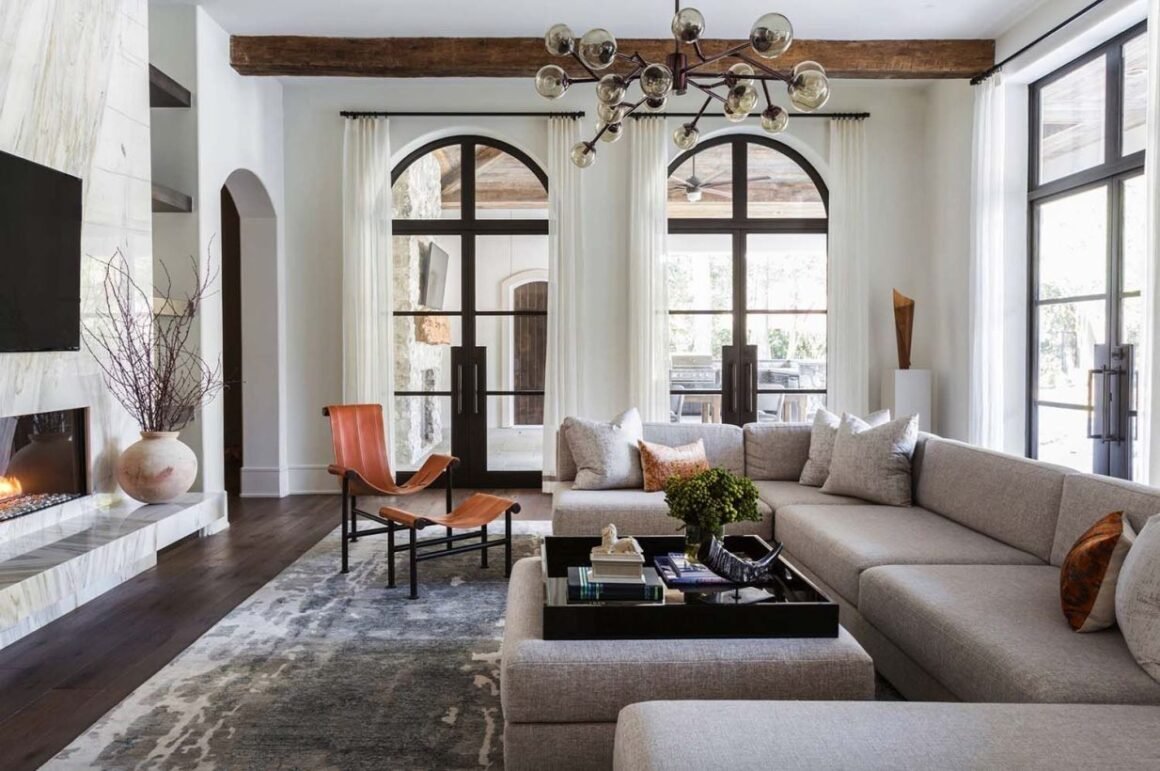
So in general, Mediterranean homes are dominated by exposed beams, arched hallways and textured walls. They use natural materials: treated wood, cotton and iron to give it a rustic charm. Steeped in history, the style reflects this with intricate ornamentation, tiled walls, staircases and ceilings. Mediterranean style is bold, bright and beautiful. Stone walls and floors are essential when looking for elegance. Stone can also be used in the kitchen, bathrooms, starting from ornaments and ending with dishes, thus bringing natural elements and neutral colours.
Skandinavian
The Scandinavians know exactly what they are doing. With its clean and modern lines, this design style has taken root in society and doesn't seem to be going away anytime soon. So what is classic Scandinavian design and why are we so drawn to it? Scandinavian design is simple. And simplicity is key. The more echo you can hear in the room, the better Scandinavian design you have.
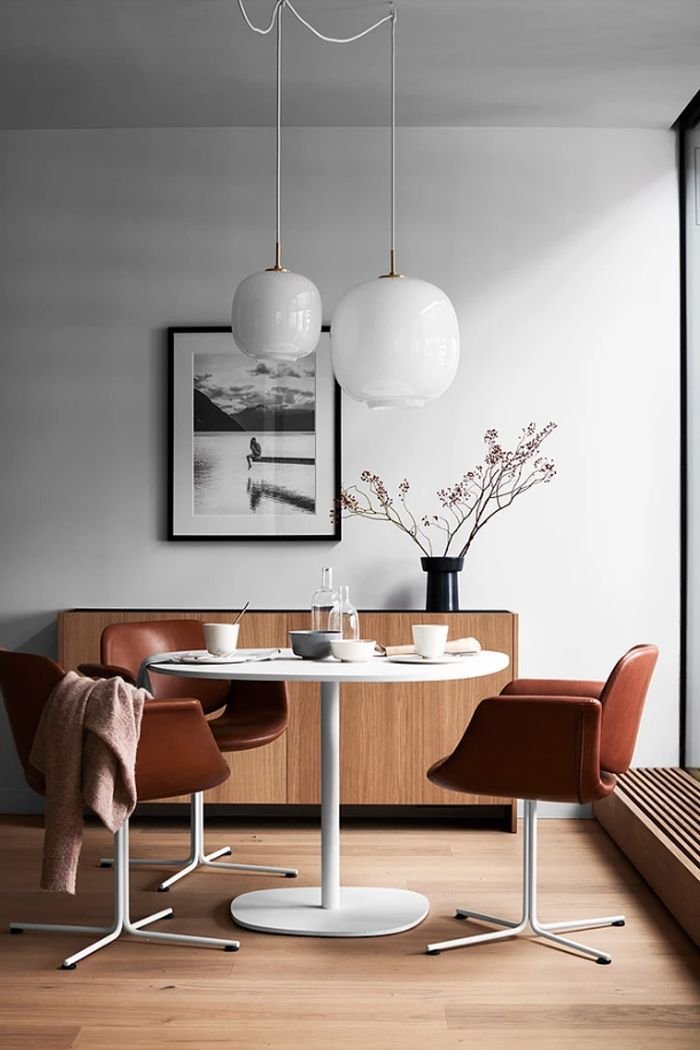
It is functional, minimalist and clean, but at the same time extremely aesthetic. Very neutral colours are used, mostly white and brown. The design is popular for their aspirational appeal – minimalism and functionality means there’s no room for clutter.
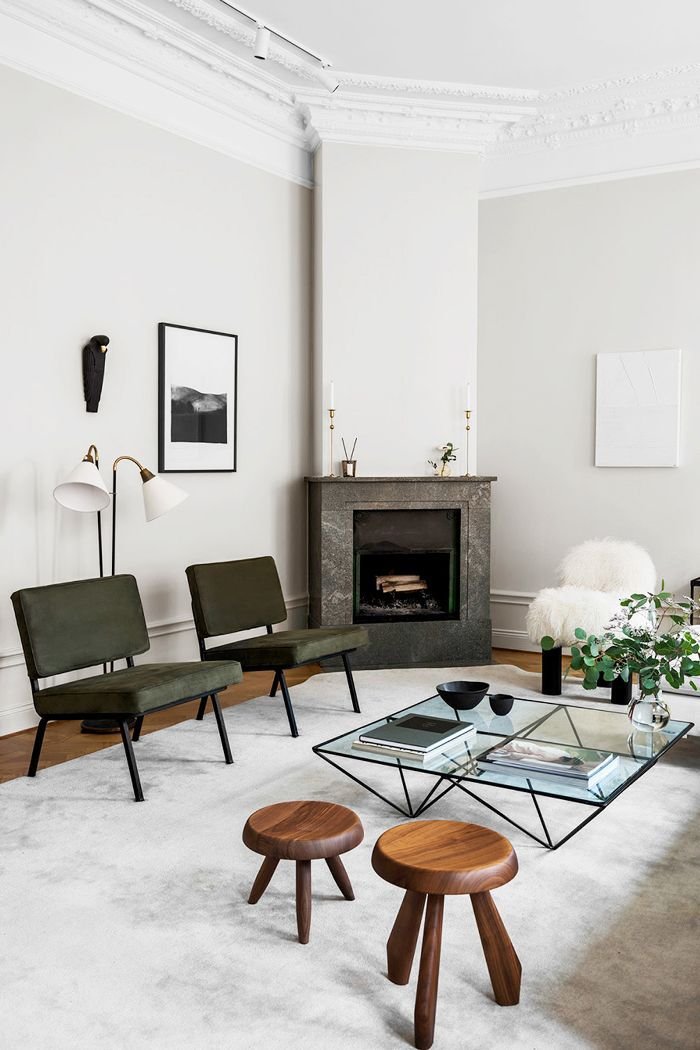
This style is simple and minimal, functional and accessible, masterful yet affordable. The main characteristics of the Scandinavian interior:
- Natural light. Scandinavian interior design is characterized by minimalist colour palettes, cozy accents and impressive modern furniture. Often the design plays with natural light.
- Contrast. High contrasts are key feature of Scandinavian interior design. For example, in an all-white room, black sculptural furniture will help create a dramatic and impressive view.
- Modern style furniture, which is very popular even in new built contemporary spaces.
- Muted colors.
- Coziness. “Hygge” means coziness, playfulness and comfort in Danish and Norwegian. Scandinavians try to incorporate this philosophy into all aspects of decor. This philosophy can be very clearly revealed by layering bedding. Swedish and Danish people are pros at making hospitable bedding. This often includes linen sheets, wool blankets and a small collection of accent pillows, often matched tone-on-tone.
- Mixing the textures. Even in a gray-toned room, coziness can be obtained with different surfaces and complementary details.
- Warm wooden details. Warm wood tones are popular in Scandinavian interiors, they give a room a sunny and bright feeling without using bright colours.
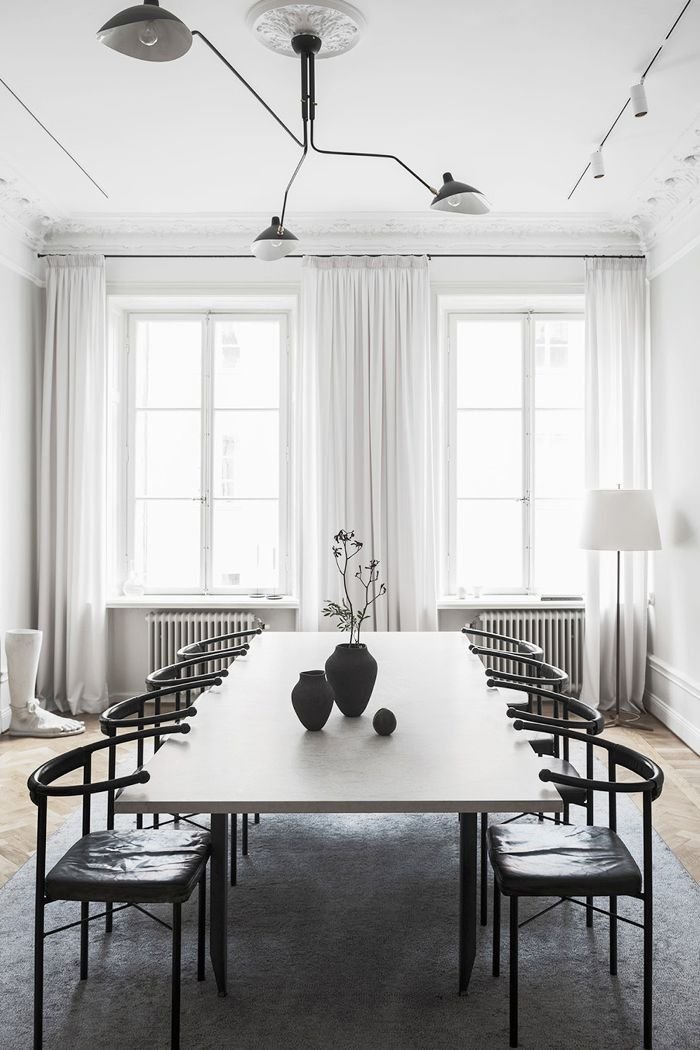
Scandinavian interior design is a minimalistic style that combines textures and soft tones to create a sleek, modern interior that is warm and inviting. It emphasizes clean lines, utility and simple furniture that is functional, beautiful and cozy.
There are a lot of other interior styles inspired by other cultures, but they are not popular in other countries due to climate or large cultural differences. And the point is – there is no winner of the best and most beautiful style. Everyone makes their choices according to their lifestyle, taste, experience and sentiments. As the French say – “trends come and go, but houses remain”. So, the most important thing is to hear the voice of your heart and create a home that is always good to return to.

